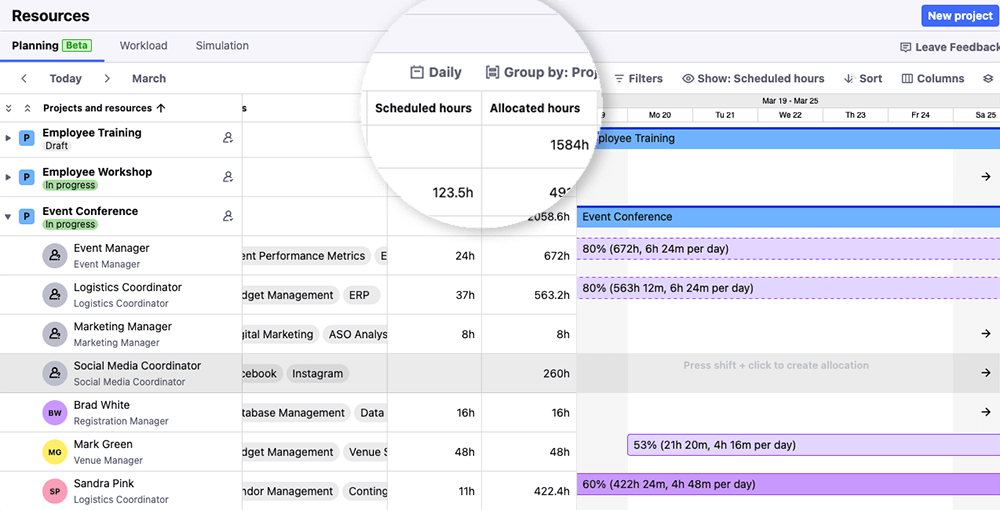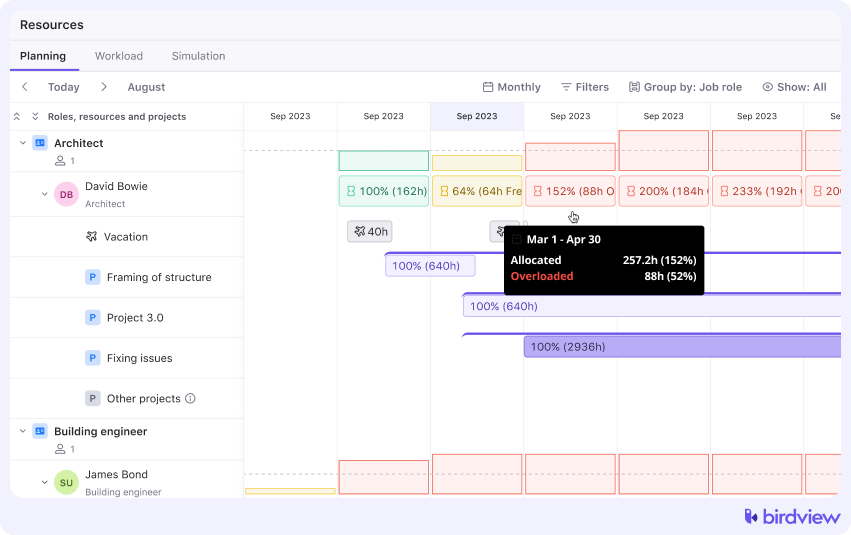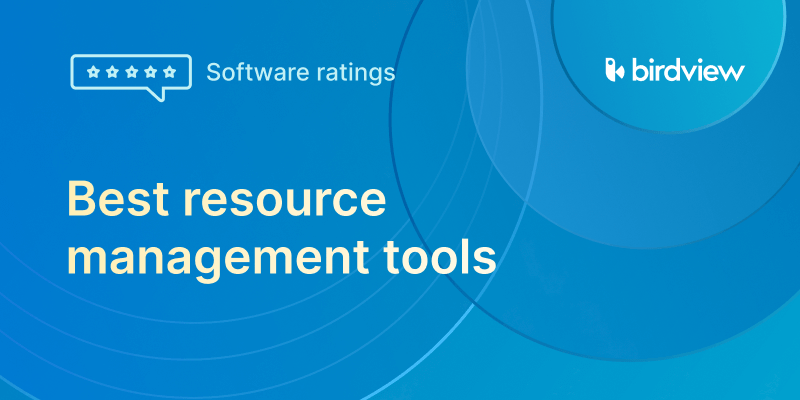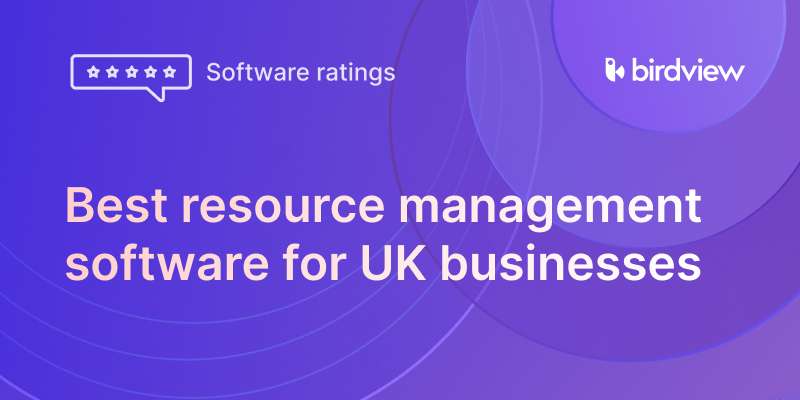In professional services, where projects vary in scope and complexity, adept resource management is the linchpin of success. It’s about ensuring the right people and tools are in place at the right time.
Professional Services Resource Management makes sure the right team members are on the right projects when they’re needed, equipped with the necessary tools and support to provide top-notch service. It’s all about balancing the needs of projects, helping professionals grow, and keeping clients happy.
What is professional services resource management
Resource planning and scheduling are fundamental pillars of effective resource management In professional services, guiding organizations to efficiently allocate and utilize their resources.
Understanding the crucial differences between these two processes is essential for achieving service project success.
This comprehensive guide will explore the intricacies of resource management in professional services, equipping you with the knowledge and strategies needed to optimize resource utilization within your services organization.
Why is resource management so important in the professional services industry?
Professional services resource management is defined as a strategic approach to planning, allocating, and optimizing human and material resources in organizations offering expertise-based services. These management practices are critical in sectors such as Business Consulting, Marketing Services, Engineering Services, Advertising Agencies, Professional Services, and IT services, where the quality of work and customer satisfaction depend largely on the skills, knowledge, and efficiency of the professionals involved.
Difference between resource planning and resource scheduling in professional services
Resource Planning
Resource planning in professional services is the strategic process of identifying, allocating, and aligning the right resources to the right tasks and projects. It is a proactive approach that takes place before any work begins and sets the foundation for a successful project lifecycle. The primary objectives of resource planning are as follows:
- Resource Identification: Firstly, resource planning involves identifying all the available resources within the service organization. These resources primarily encompass the people, such as employees, contractors, or freelancers, and the tools, equipment, and budget required for the project.
- Resource Allocation: Once the resources are identified, the next step is to allocate them based on their skill sets, expertise, and availability. It aims to ensure that each resource is assigned tasks that align with their strengths, leading to enhanced productivity.
- Resource Utilization: Resource planning optimizes the utilization of resources by preventing overallocation or underutilization. This strategic approach helps in avoiding bottlenecks and inefficiencies that may hinder project progress.
- Anticipating Requirements: An effective resource planning process also involves anticipating the resource requirements for future service projects. This foresight helps in better capacity planning, ensuring the organization has the necessary resources to tackle upcoming challenges.
Resource Scheduling
Resource scheduling in professional services resource management, on the other hand, is a tactical process that takes place during the project’s execution phase. It involves creating detailed schedules and timelines for the resources assigned to specific tasks. This keeps projects flowing smoothly and ensures timely delivery, all while juggling the interdependencies and real-time changes that come with professional services work. The primary objectives of resource scheduling are as follows:
- Task Sequencing: Resource scheduling in professional services ensures that tasks are sequenced logically, with each task starting only when its prerequisites are completed. This sequencing helps maintain order and efficiency in service project execution.
- Time Management: By allocating specific timeframes to each task, resource scheduling ensures that the project stays on track and adheres to deadlines. It helps in avoiding delays and mitigates potential risks associated with project overruns.
- Handling Dependencies: Complex projects often have tasks that depend on the completion of other tasks. Resource scheduling addresses these dependencies and coordinates efforts to prevent any roadblocks.
- Real-time Adjustments: In dynamic professional services work environments, changes in priorities, unforeseen challenges, or shifting deadlines are common. Resource scheduling allows for real-time adjustments to ensure resources are optimally allocated to address these changes.

Difference between scheduled and allocated hours in professional services
In the realm of professional services resource management, accurately allocating and scheduling hours is essential for the successful execution of service projects. Both scheduled hours and allocated hours play crucial roles in ensuring efficient resource utilization and project planning. However, these terms encompass distinct aspects of professional services resource management and may be managed by different organizational roles. Understanding the difference between scheduled and allocated hours is vital for optimizing resource allocation and achieving project objectives effectively.
Scheduled hours refer to task-level assignments or commitments of resources to project tasks within the project schedule. Project managers are responsible for defining and managing scheduled hours. They represent task-level agreements, indicating the estimated effort and duration for each task.
Allocated hours represent bookings or reservations of resource capacity. Allocations can be created and managed by resource managers. Allocations can be soft or hard, and their difference will be described in the next section.

While scheduled hours represent task-level assignments, allocations focus on resource-level agreements. In an ideal scenario, the sum of assignments and allocations should be equal, but in practice, variations may occur due to changing project requirements or resource availability.
Difference between soft and hard allocations and when to use them
Resource allocation plays a vital role in the effective management of tasks, projects, or activities within professional services organizations. It involves assigning resources based on factors such as importance, priority, and availability. Making strategic decisions regarding resource allocations is vital for the successful execution of projects. There are two key types of allocations that play a crucial role in determining how resources are reserved and assigned to projects. Let‘s have a closer look at both soft and hard allocations.
Soft allocations are provisional reservations made by project managers, expressing their intent to work with specific resources. These allocations allow project managers to secure resource availability without consuming the resource’s capacity. They provide flexibility as resources can still be allocated to other projects until a final decision is made by the resource manager. Soft allocations are suitable when project managers need to request resources or demonstrate resource needs for planning purposes.
Hard allocations, on the other hand, are firm reservations made by resource managers. When a hard allocation is created, the resource’s capacity is consumed, and they are committed to the project. Hard allocations in professional services resource management provide certainty and ensure that the allocated resources are dedicated to a specific project. They are useful when resource managers want to assign and reserve resources for projects firmly.
Project manager vs. resource manager in professional services: key differences
As we‘ve mentioned above, project and resource managers are responsible for accurately allocating and scheduling hours to ensure efficient resource utilization and on-time project delivery. Let‘s have a closer look at both project managers and resource managers to better understand their distinct responsibilities and focus areas.
| Aspect | Project Managers | Resource Managers |
|---|---|---|
| Responsibility | Manage the entire project lifecycle. | Manage and allocate resources. |
| Primary Focus | Project objectives, timelines, deliverables, and stakeholder expectations. | Resource availability, allocation, and utilization. |
| Goal Setting | Define project goals and objectives. | Ensure resources are available to support project execution. |
| Planning | Develop project plans, schedules, and strategies. | Allocate resources to specific projects. |
| Coordination | Coordinate resources, tasks, and team members. | Oversee a pool of employees/contractors. |
| Progress Monitoring | Monitor project progress and milestones. | Ensure resources are utilized effectively. |
| Collaboration | Ensure effective collaboration between the project team and clients. | Ensure the right resources are assigned based on skills and expertise. |
| Scope | Focus on the entire project scope. | Focus on professional services resource management and optimization. |
| Decision Making | Make project-related decisions to achieve project goals. | Make decisions regarding resource allocation and utilization. |
| Success Criteria | Successful project delivery on time and within scope. | Optimal resource utilization to support project execution. |
| Skills Emphasized | Leadership, communication, problem-solving, and planning. | Resource allocation, workforce planning, and resource optimization. |
| Outcomes | Successful project completion and stakeholder satisfaction. | Efficient resource allocation leads to improved project performance. |
| Communication | Liaise with stakeholders, clients, and project team members. | Collaborate with project managers, department heads, and HR. |
While project managers focus on guiding and managing the entire project from inception to completion, resource managers concentrate on ensuring the availability and optimal utilization of resources required for project execution. Their roles may intersect at times, but each plays a distinct and vital role in ensuring the success of projects within an organization.
Two types of resource management scenarios in professional services organizations
In professional services organizations, the roles of a project manager and a resource manager can take various forms depending on the size, complexity, and specific requirements of the projects and resources involved. There are two common scenarios in the context of professional services project and resource management:
- Separate project managers and resource managers
In larger organizations or projects with significant complexity, the responsibility for defining resource requirements and managing resource allocation is divided between the project manager and the resource manager. The project manager identifies the resource needs for the project and submits formal requests to the resource manager. These requests typically include details such as project timelines, rates, required skills, and job roles.
The resource manager, in turn, takes charge of finding and proposing suitable resources based on the project’s parameters. They utilize their expertise in resource allocation, considering factors like staff availability, skills, and experience. The proposed resources are then presented to the project manager for review.
During the review process, the project manager evaluates the proposed resources and their alignment with the project’s objectives. They have the authority to accept or reject the resource proposals based on the project’s specific requirements. This collaborative approach ensures that project managers can focus on project-related tasks while relying on the expertise of resource managers to find the best-suited individuals for the project.
This scenario is particularly advantageous when professional services organizations have dedicated project managers and resource managers working separately. It promotes specialization and allows each role to focus on its core responsibilities, leading to efficient resource utilization and successful project outcomes.
- Matrix organizational structure
In some organizations, both project managers and resource managers have the authority and flexibility to define resource requirements and find suitable resources for their projects. This mode often occurs in organizations where one person takes on both the project manager and resource manager roles.
Project managers are actively involved in identifying the specific resource needs for their projects. They have the authority to allocate and book resources based on their understanding of the project’s requirements and their knowledge of available resources within the organization. This level of involvement allows project managers to have greater control over resource allocation and ensures that resources are aligned with the project’s objectives.
On the other hand, resource managers in the hybrid mode still play a supportive role. They provide valuable insights and guidance to project managers regarding resource availability, skills, and utilization. The collaborative approach between project managers and resource managers fosters effective professional services resource management and ensures that the right resources are allocated to the right projects.
This scenario is commonly observed in organizations where the size or structure may not warrant separate, dedicated project and resource managers. Instead, a single individual with the necessary expertise takes on both responsibilities. This mode empowers project managers to make informed resource decisions while benefiting from the input and expertise of resource management functions.
- Combined role – project manager with resource management responsibilities
In some professional services organizations, especially smaller ones or projects with fewer resource demands, there might be a single individual carrying out the responsibilities of both the project manager and resource manager. In this scenario, the project manager takes on additional responsibilities related to resource management. They not only handle project planning, coordination, and stakeholder communication but also manage the allocation and utilization of resources. This combined role can be efficient when the scale of projects and resource requirements allows for effective management by one person.
Four key professional services resource management problems and how to overcome them
Effective resource management is a critical aspect of organizational success. Efficiently allocating and utilizing resources ensures projects are completed on time, within budget, and with the highest quality outputs. However, several key challenges can hinder resource optimization.
1. Underutilization of Employee Skills
One prevalent challenge in professional services resource management is the underutilization of employee skills. This arises due to various factors such as skills misalignment, lack of workload balancing, and ineffective resource allocation. Underutilization can have a significant impact on project outcomes and overall productivity and can occur either during the planning or scheduling stages. Preventing underutilization in the planning stage:
To address the issue of underutilization, it is crucial to take proactive steps during the planning stage of resource management. This involves:
- Conduct Skill Assessments: Accurately assess the skill sets of employees to identify their areas of expertise. This evaluation will help align employees with projects that fully utilize their specialized skills, enhancing productivity and job satisfaction.
- Balance Workload Effectively: Ensure workload distribution is balanced among team members. By avoiding situations where some employees have excessive workloads while others remain underloaded, organizations can optimize resource utilization and maintain a harmonious work environment.
- Implement Systematic Resource Allocation: Establish a structured approach to resource allocation. By leveraging a centralized professional services resource management system, organizations can assign resources based on their specific skills and availability, preventing valuable talents from remaining idle while other projects face shortages.
Identifying and addressing underutilization in the scheduling stage:
While preventive measures are essential during the planning stage, it is equally crucial to identify and address underutilization during the scheduling stage. This involves:
- Regular Performance Monitoring: Monitor the performance of individual employees and project teams continuously. Identify any signs of underutilization, such as employees consistently finishing tasks well before deadlines or showing low productivity.
- Skill Reassignment: If underutilization is detected, consider reassigning tasks or projects to better align with employees’ skills and expertise. This flexibility allows for optimal resource allocation, ensuring that employees are engaged in meaningful work.
- Training and Development: In cases where underutilization is caused by skills misalignment or lack of expertise, invest in training and development programs. By upskilling employees, the organization can increase their capabilities and subsequently utilize their enhanced skills in relevant projects.
- Resource Collaboration: Encourage collaboration and knowledge sharing among team members. This can lead to a more dynamic utilization of skills as employees work together to leverage their collective expertise.

2. Inadequate Planning and Coordination of Resources
Inadequate planning and coordination of resources can lead to overbooking and double booking, resulting in conflicting priorities and compromised project timelines. To tackle this challenge, during the resource planning stage, organizations should focus on the following:
- Gain Real-Time Visibility: Utilize professional services resource management tools that provide comprehensive visibility into resource availability and workload. This real-time insight empowers managers to make informed decisions and prevent overbooking, ensuring optimal resource utilization.
- Establish Clear Guidelines: Develop clear guidelines for resource allocation, considering project timelines, dependencies, and the availability of resources. By aligning assignments with individual capacities, organizations can avoid double booking and maintain work quality.
3. Conflicts of Interest
Conflicts of interest can arise during the professional services resource planning stage when project managers prioritize their projects or consistently favor certain individuals for multiple assignments. To promote fair resource allocation, organizations should implement the following measures:
- Foster an Unbiased Allocation Framework: Establish an unbiased resource allocation framework that considers project priorities, strategic importance, and overall organizational objectives. Involving resource managers in the decision-making process can help mitigate personal biases and ensure equitable resource distribution.
- Encourage Diversity in Resource Allocation: Embrace diversity in resource allocation by avoiding repetitive favoritism. By leveraging the unique skills and capabilities of various team members, organizations can enhance skill diversity, reduce dependencies, and achieve better outcomes.
4. Lack of Visibility and Communication in Professional Services Resource Management
Limited visibility into resource availability and inadequate communication channels across the entire organization, including team members, managers, leadership, etc., can impede effective professional services resource management. To address this challenge, organizations should focus on the following aspects:
- Enhance Communication Channels: Foster transparent communication channels among project managers, resource managers, and team members. Encouraging open dialogue and sharing resource-related insights can help identify and resolve conflicts, improving resource utilization and overall project success.
- Adopt Resource Management Tools: Implement a centralized professional services resource management system or platform that provides comprehensive information about resource availability, skills, and utilization. Such tools facilitate effective planning and ensure resources are allocated optimally.
Professional Services Automation Software (PSA) is ideally suited for managing both resources and projects within the professional services sector.
How to choose the right PSA software for successful professional services resource management
What are the Key Features to Look for in PSA Software for Effective Resource Management? When selecting Professional Services Automation (PSA) software for effective resource management, consider the following key features:
Resource Planning: This feature organizes and assigns the right staff and resources to future projects for optimal performance.
Resource Scheduling: Seek out features that simplify the process of matching team members to projects, considering their skills, availability, and project needs.
Skill Tracking: The software should have a database that catalogs the skills, experience, and qualifications of each team member, enabling precise matching of project needs with individual capabilities.
Time Tracking and Billing: A must-have for professional services, this function accurately logs billable hours, aiding in clear billing and profit tracking.
Project Management: Comprehensive project management features, including task assignment, progress tracking, and milestone management, help keep projects on track and resources effectively allocated.
Collaboration Tools: Integrated communication and collaboration tools facilitate seamless interaction among team members and clients ensuring everyone is aligned and informed.
Real-Time Reporting and Analytics: The ability to create instant reports on how resources are used, project statuses, and financial health are vital for making smart, informed decisions.
Capacity Planning: Features that enable forecasting of resource availability and demand help in proactively managing workloads and preventing resource bottlenecks.
Financial Management: Look for PSA software that includes budgeting, expense tracking, and financial reporting to maintain control over project finances and overall business health.
Customization and Scalability: Ensure the software can be tailored to your firm’s specific processes and is capable of scaling with your business’s growth.

Final thoughts
Resource planning plays a vital role in successful project management, enabling professional services organizations to allocate and optimize their resources effectively. By understanding the different resource management modes, the roles of project managers and resource managers, the difference between scheduled and allocated hours, and the significance of soft and hard allocations, resource managers and project managers can collaborate more efficiently.
In Birdview’s Resource Planning Center, both project managers and resource managers have the flexibility to define resource requirements, find resources, and allocate or book them based on project needs. By leveraging this tool, organizations can streamline their professional services resource management processes and ensure that projects are staffed appropriately, leading to improved project outcomes.
If you’re a resource manager or a project manager, Birdview’s Resource Planning Center can greatly enhance your resource management capabilities, allowing you to optimize resource allocation, monitor project progress, and achieve project success. Efficient resource planning leads to effective project execution, contributing to the overall success of your organization’s projects.



